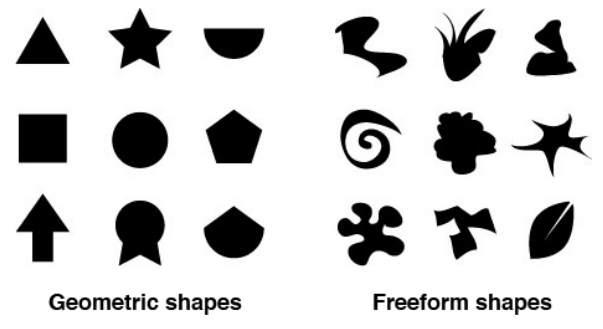

Expressing order and structure: Geometric shapes are often associated with order, stability, and control.Not only that, but artists in modern art often experiment with abstract shapes in their composition, pushing the boundaries of traditional representation. Cohesion and Visual Unity: Unity is one of the 7 principles of art, and by working with similar and related shapes, you can create visual coherence and interest.You can also create asymmetry or deliberately disrupt the equilibrium to create an interesting, chaotic effect! Symmetry And Balance: Create stability in your artwork, especially by using geometric shapes correctly.Artists can also use light and dark shapes to create that hierarchy. For example, large and bold shapes to grab the viewer’s attention, with smaller shapes receding into the background. Visual Hierarchy: Establish a visual hierarchy with shape.Using shape correctly can give many key aspects to your composition: By utilizing various types of shapes, artists can manipulate the viewer’s perception and evoke specific emotions. In the world of art, shapes play a crucial role in creating a visually captivating composition. Imagine standing in a lush meadow, surrounded by the vibrant colors of flowers and grasses, their shapes gently swaying in the breeze, guiding your eye towards a distant mountain peak. There are different types of shapes in art, such as organic shapes and geometric shapes.īy experimenting with different types of shapes and utilizing the negative space, artists can push the boundaries of traditional art and create visually stimulating compositions. Shape refers to the two-dimensional area created by the boundaries of an object or figure.

It is one of the fundamental elements of art, along with line, color, form, value, texture, and space.

Shape in art is like puzzle pieces that fit together perfectly to form a beautiful picture, allowing you to feel a sense of completeness and satisfaction.
#Organic and geometric shapes in art free
Being free form, they don’t have uniformity and perfect measurements. Organic shapes are out there in the natural world, created by the environment. They look natural and are mostly found in leaves, flowers, plants and animals. Their main characteristics are curving appearance and smooth flowing outline. Organic shapes are also called curvilinear that are made up of curves, angles or both. The difference between organic and geometric shapes


 0 kommentar(er)
0 kommentar(er)
